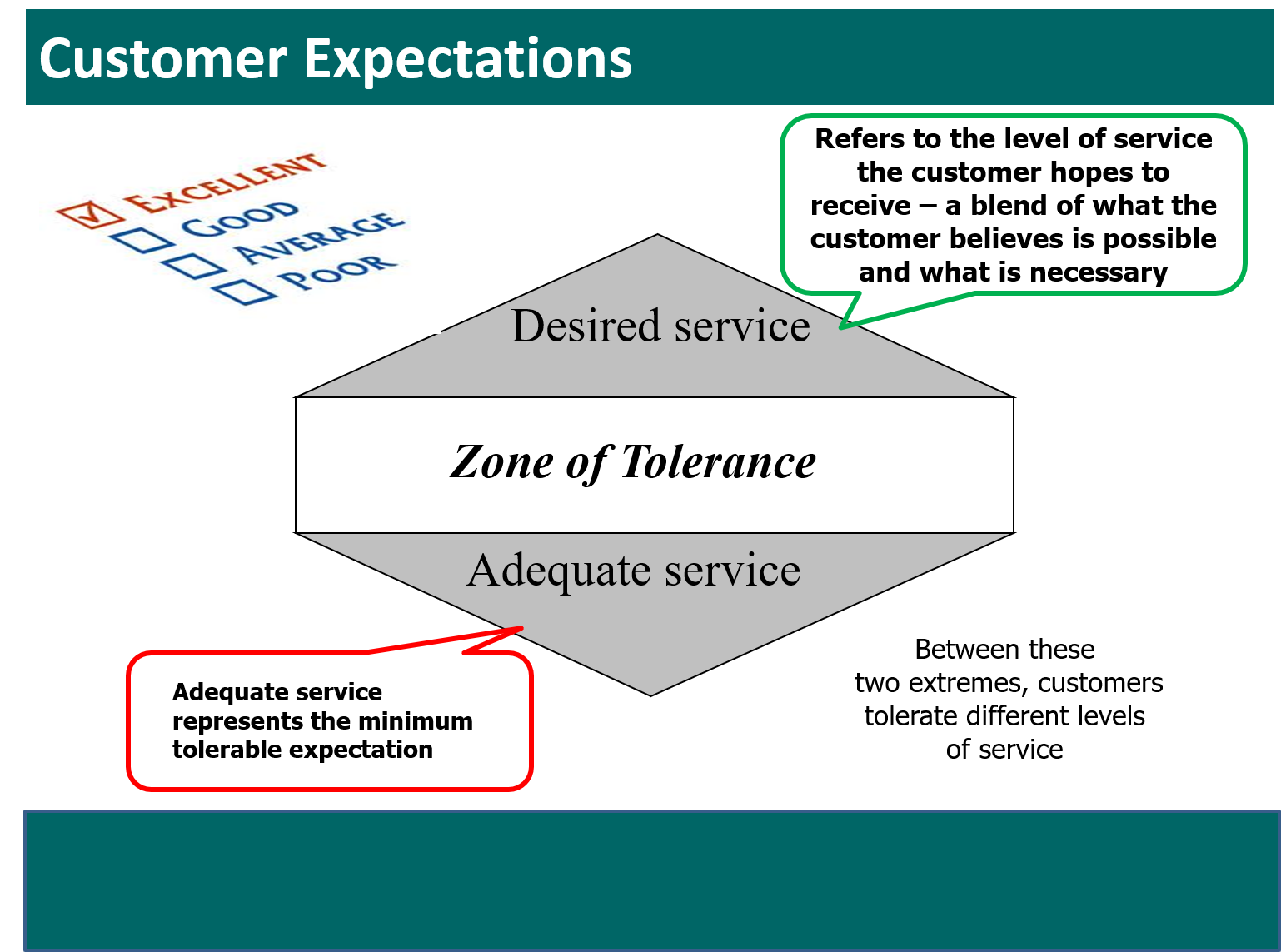Before we consider those factors that shape the expectations of customers, it is important to know that customers hold two levels of expectations:
- Desired service; and
- Adequate service.

Desired Service: Refers to the level of service the customer hopes to receive – a blend of what the customer believes is possible and what is necessary.
Adequate Service: Refers to the level of service that a customer will accept, because they often realise that the desired level of service is impossible. On a month-end Saturday morning, we all accept that the local supermarket is going to be extremely busy and that you will inevitably have to queue in awaiting service at the checkout point. We will tolerate the waiting, but often only up to a certain point. If you notice the long queues and simultaneously realise that only two cashiers are on duty, many of us will rather leave, go somewhere else or return at a later stage. In other words, the level of service is unacceptable.
Desired service: Can thus be regarded as the “ideal” level of service and adequate service represents the “minimum tolerable expectation”. Between these two extremes, customers tolerate different levels of service. The extent to which they recognise and accept these variations in the level of service, is called the zone of tolerance.
Different factors shape the expectations that customers have about service.